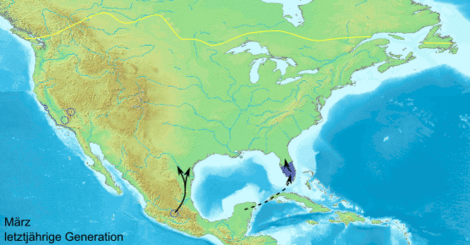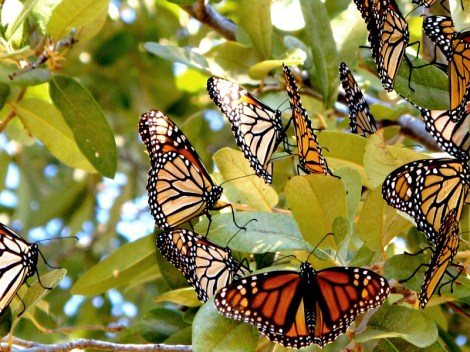It’s not so much the butterfly effect as the butterfly affected: We knew monarchs had it bad as of late, but there was some hope for their winter migration — until scientists conducted a census.
In just two years, the annual migration of North American monarch butterflies has declined by 59 percent, and scientists are blaming extreme weather and “changed farming practices,” according to the New York Times. In other words, monster storms and monster Monsanto.
The area of forest occupied by the butterflies, once as high at 50 acres, dwindled to 2.94 acres in the annual census conducted in December, Mexico’s National Commission of Natural Protected Areas disclosed at a news conference in Zitácuaro, Mexico. …
The latest decline was hastened by drought and record-breaking heat in North America when the monarchs arrived last spring to reproduce. Warmer than usual conditions led the insects to arrive early and to nest farther north than is typical, Chip Taylor, director of the conservation group Monarch Watch at the University of Kansas, said in an interview. The early arrival disrupted the monarchs’ breeding cycle, he said, and the hot weather dried insect eggs and lowered the nectar content of the milkweed on which they feed.
That in turn weakened the butterflies and lowered the number of eggs laid.
But an equally alarming source of the decline, both Mr. Taylor and Mr. Vidal said, is the explosive increase in American farmland planted in soybean and corn genetically modified to tolerate herbicides.
The milkweed monarchs used to feed on in the corn belt is, well, a weed, and farmers have handily knocked it out while also expanding farmland by millions of acres each year. As milkweed-free farm land expands, food for monarchs disappears. Mexico claims to have cut back on deforestation in the monarchs’ migratory home, but we haven’t done our part on this side of the border. There’s no stopping drought and Roundup-Ready crops at this point.
Monarchs are one of the only insects capable of such a long-distance migration. Here, this cool German gif will tell you all about it:

If the monarch migration drops another half acre next year, scientists say, the butterflies may not be able to recover and the migration will end. If you live along the monarch’s flight path (and almost all of us do), planting milkweed in your garden couldn’t hurt. But also maybe book a flight to Mexico if you really want to see these guys doing their butterfly thing before it’s all gone.




